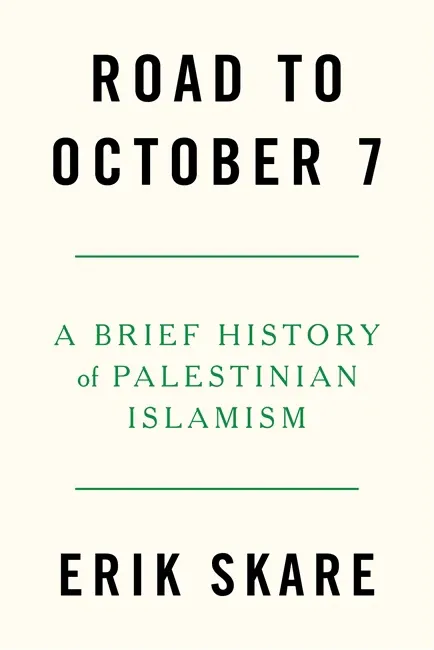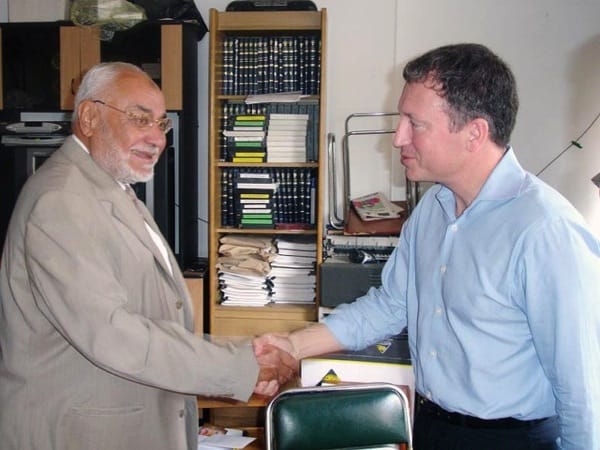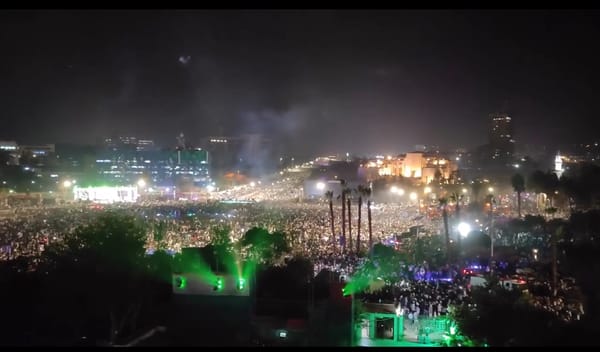Palestinian Islamists and the Road to October 7
Plus a special focus on recent academic work on Syria's Post-Asad transition

I’m crashing on an urgent book deadline, so haven’t been able to post much this week. That’s not for lack of news, of course. The news for higher education and Middle East Studies continues to go from bad to worse — mass secret cancelations of student visas and deportations; Marco Rubio’s declaration that Mahmoud Khalil was to be deported not because of any claimed criminal conduct but because of his “past, current or expected beliefs, statements or associations that are otherwise lawful”; more freezing of federal grants, this time to Northwestern and Cornell; reports that Trump wants to put Columbia University, despite (or perhaps because of) all of its shameful capitulations, into federal receivership; the shuttering of the Wilson Center; massive cuts to NEH; and so much more.
In the Middle East, Israel’s war on Gaza continues to exact a horrifying human toll, with little media or public attention, with famine again setting in as stockpiles built up during the ceasefire run out and Israel’s blockade prevents more food and aid from entering. The International Court of Justice has begun hearing a case brought by Sudan accusing the UAE of complicity in genocide over its backing of the RSF — a critically important moment of potential accountability for actors fueling horrifically a destructive civil war, and a real time refutation of the absurd claim during the ICJ’s ruling on genocide in the case of Israel and Gaza that it somehow singled out Israel because of ‘antisemitism’. International humanitarian law must apply to all equally, or there is no law — which is too often the case, and too often celebrated rather than mourned.
This week’s edition of the MENA Academy presents a new book about Hamas and October 7 and spotlights new research on Syria’s post-Assad transition.
Book of the Week: The Road to October 7, by Erik Skare (Verso, 2025)
Why did Hamas launch its attack on Israel on October 7, 2023? There has obviously been an enormous amount of journalism, analysis, and research seeking to explain the constellation of local, regional, and international politics which motivated the attack. Erik Skare’s new book, The Road to October 7 (Verso, 2025), makes an important contribution to that literature by focusing on an often neglected dimension: the historical evolution and internal competition among Palestinian Islamist movements and within Hamas.
Skare, an historian of Palestinian Islamism who has previously written important books about the Palestinian Islamic Jihad, sees the road to October 7 as a long one indeed. He begins not that day, and not that year, but many decades earlier with the emergence of different strands of Islamism in Gaza and the West Bank. He traces the diverging political and strategic paths of PIJ and Hamas as they navigated the first Intifada, the Oslo years, and the bloody second Intifada. His nuanced, careful analysis shows not only what those organizations did, but how they thought about their choices and the debates, both internal and public, which shaped those choices. This isn’t one of those sensationalist books or an instant history — it’s a serious work of historical scholarship written in an accessible way that should be of broad interest.
The book then looks carefully at Gaza in the years leading up to 2023. Skare show how the demands of governance changed the internal balance of power inside Hamas and between Hamas and its rivals. He traces the divergence between the political leadership based outside Gaza and the military leadership and actual governance institutions inside over the long years of Israel’s blockade. He’s particularly interesting in discussing how Israeli assassinations of political leaders and the failures of political gambits promoted by the “moderate” or outside leadership — such as the revision of the Charter, ceasefire proposals, and especially the Great March of Return (where nonviolent mass marches towards the security perimeter were met with deadly Israeli sniper fire and little positive international response) — strengthened the hand of Yehya Sinwar and the hardline military factions.
Skare joined the Middle East Political Science podcast this week to talk about the new book. Listen here:
Spotlight on Syria
The Journal of Democracy has just released a spectacular three essay collection of reflections on the end of the Assad regime. Anyone who follows Syria will be excited to dig in to provocative thoughts from Rana Khoury, Daniel Neep, Wendy Pearlman and Lisa Wedeen — all POMEPS stalwarts and brilliant, sensitive observers of Syrian politics. Jerome Drevon, whose work on HTS we have presented here several times, also has a new Foreign Affairs article on the challenges facing Ahmed Sharaa in consolidating Syria’s transition. Finally, we have a fascinating new research article on memories of Syria’s Great Revolt in the 1920s and its legacies for armed conflict.
Lisa Wedeen, “Forever Has Fallen: The End of Syria’s Assad.” Journal of Democracy (April 2025). ABSTRACT: When rebel forces seized Damascus on 8 December 2024 and toppled the regime of Syrian president Bashar al-Assad, it was impossible not to share in the euphoria over the end of 54 years of brutal dictatorship. After more than a decade of civil war, rebel forces began the offensive that finally brought down the regime, showing Syrians that nothing is permanent, not even dynasties. Political transformation finally came because the regime's backers withdrew their protection and Assad's deeply demoralized army collapsed. The essay explores the challenges facing Syria's new leadership under Ahmad al-Sharaa, including sectarian tensions and the destabilizing influence of Western sanctions and Israeli military interventions. Whatever comes next, this chapter of Syrian suffering is over, though the complexities of transitional justice and the devastating sectarian violence that erupted in March 2025 cast uncertainty over Syria's future.
Daniel Neep, “Rebuilding the State in Post-Assad Syria.” Journal of Democracy (April 2025). ABSTRACT: Voices in the international community express concerns over the need to protect minority rights in post-Assad Syria. Confessional quotas, ethnosectarian power sharing, and confederal devolution have all been proposed as potential safeguards for liberal freedoms. Syrian responses to these proposals are nevertheless shaped by the country's prior experience of the problems caused by the architectures of both identity-based politics and laissez-faire liberalism. The prospects for democratization after Assad will reflect the long-term trajectory of state-building in Syria, not solutions from outside.
Rana Khoury and Wendy Pearlman, “Why Syria’s Civil Society is the Key,” Journal of Democracy (April 2025). ABSTRACT: Syria's best asset for an inclusive, transparent, and participatory political transition is its civil society. During years of uprising and war, citizens built diverse initiatives to achieve political change, raise awareness, pursue justice, and provide humanitarian relief. Today, organizations inside and outside the country have the capacity, experience, and will to push for democracy. They are already doing so by mobilizing pressure to demand accountability; cultivating democratic citizenship; channeling expertise to resolve key state challenges; and helping to alleviate the population's dire material needs. International parties must follow the lead of the Syrian grassroots and support their priorities and work.
Jerome Drevon, “Syria’s Uncertain New Order,” Foreign Affairs (April 2025). Excerpt: It does not look as if Syria is about to once again become a one-state autocracy, even if that were an outcome that Shara secretly wanted. What is emerging under Shara is a government that has elements of both authoritarian rule and more federated, decentralized organization. It faces an uphill battle in consolidating its hold on Syria and in getting all the country’s constituent groups on board. The HTS leadership exerts tight control at the top, even as it makes concessions to other groups that it is trying to integrate at lower levels, including the armed ethnic factions that run parts of the south and east of the country. This effort is already reaching its limits, with a bottleneck at the highest levels, as only a few officials make all the decisions, and divisiveness on the ground, as rival factions resist being absorbed by the new regime.
Victoria Gilbert and Christopher Chiego, “The Great Syrian Revolts: Local Memory, National Myths, and the Persistent Geography of Syrian Violence,” Nations and Nationalism (April 2025). ABSTRACT: Why does political violence recur over time in certain geographic areas and not others? Previous studies have linked past violence and later political behaviour, but why and how specific types of political violence have long-term effects while others do not remains unclear. We argue that violence from revolts woven into the national narrative connects local places to enduring national myths that can be drawn upon to facilitate armed local mobilisation during later national uprisings. Using the case of Syria, we develop a new dataset of violent resistance to French colonial rule in the 1920s and the Islamist insurgency of 1976–1982. We find that areas with anti-colonial violence have a statistically significant relationship with the geography of organised violent resistance during the initial phase of the 2011–2012 Syrian conflict, while Islamist insurgent violence showed no comparable effect. Our results suggest a new mechanism connecting local places, national mythmaking, and violent mobilisation.
Abu Aardvark's MENA Academy is a reader-supported publication. To receive new posts and support my work, consider becoming a free or paid subscriber.



